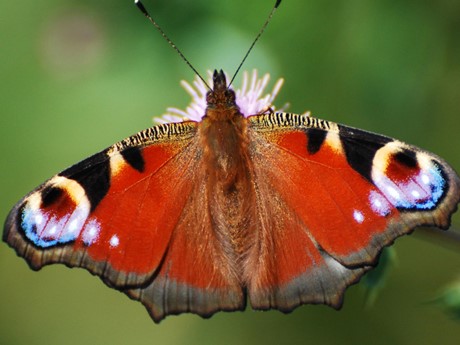Citizen science explains record-breaking jay sightings
Julian Hughes and Fritha West, 07/09/2022
Autumn. The season of mists and mellow fruitfulness. As well as blackberries for a crumble, two species that I associate with autumn are acorns falling from their little wooden cups and the flash of a blue as a jay silently passes across a woodland gap.
This autumn, there should be a good crop of acorns from British oaks, although we’ll only know for sure when the Nature’s Calendar counts are in. We expect that it’ll be a good year because last year (2021) was poor. Very poor. In fact, it was one of the lowest acorn crops on record, with many people recording oakmast as absent (0) or meagre (1). For context, the maximum acorn count is a score of 5 (find out more here).
Meanwhile, other citizen science projects were recording unusually large numbers of jays. You generally see these colourful corvids in ones and twos, or sometimes just an outline as they flap-flap-glide across a road, or a flash of bright blue from the wing panel as they move among the treetops.

Two jays looking lost on the seacliffs of the Great Orme, North Wales, in October 2021. Photo: Marc Hughes
A once-in-a-human-generation event
In Wales, we noticed many jays in late September 2021, in far larger flocks than normal. In the first week of October, there were five counts involving more than 100 birds at a site in a single day. These included 300 jays at Dunraven, Bridgend, on 6th October that were “coasting west in flocks of 10-30”. These reports smashed the Welsh record by some margin, which had stood since the last major influx in 1983.
These sightings encouraged two questions: what were these jays doing, and where did they come from? Our paper published in Milvus, the journal of the Welsh Ornithological Society, used jay records collected by birdwatchers in two databases, BirdTrack and eBird, and by participants in the BTO Garden Birdwatch alongside the oakmast results from Nature’s Calendar to find the answers.
We concluded that these jays moved large distances because they were hungry. They travelled from well-wooded inland areas in all directions until they reached the coast, aggregating at headlands, islands and on the edges of large bays. Having failed to find a supply of acorns here, and being unwilling to make a sea crossing, they dispersed quickly across the countryside, including into gardens where they could take advantage of food on bird tables. This movement of jays was the largest ever recorded in Wales, but it was short-lived, lasting just 2-3 weeks. However, the effects were noticeable for several months. Numbers in gardens peaked in November, the highest ever recorded by the BTO Garden Birdwatch in Wales and comments on social media suggest that through the winter jays visited gardens in which they had previously been rare or absent.
Where did they come from and why?
Most jays seen last autumn probably originated from within Wales, but some may have moved in from northwest and central/southern England. There is no evidence that they came from farther afield. Even though jays regularly move long distances out of Scandinavia, it is generally southward and crossings of the North Sea are rare.
The reasons behind the jays movements become clear when examining Nature's Calendar data. 2021 was the sparsest oakmast crop since 2000. Bringing together the data from multiple citizen science projects, it is clear jay sightings are lower in years when acorn crops are higher.
The increasing number of jay sightings have both baffled and delighted birdwatchers across the country, but they may be a sign of bigger problems. Jays naturally rely on acorns as a major food source. When acorn numbers are low, jays are forced to find other sources of food, meaning these usually shy birds have been relying more on garden bird feeders to fill the gap in their diet. Jays are just one of 2300 species that oak help to support - but these incredible trees face many threats.

Maximum count of jay at each site recording three or more individuals, in September (yellow), October (green) and November (blue) 2021. Image: Julian Hughes
My thanks to all those who submitted jay records to BirdTrack and eBird and who participated in oakmast recording for Nature’s Calendar. The paper was published by the Welsh Ornithological Society in September 2022. The summary is free to read, and the full paper can be viewed by WOS members.
Hughes, J. 2022. Movements of Jay (Garrulus glandarius) in Wales in Autumn 2021. Milvus: The Journal of the Welsh Ornithological Society 1: 5-20.

